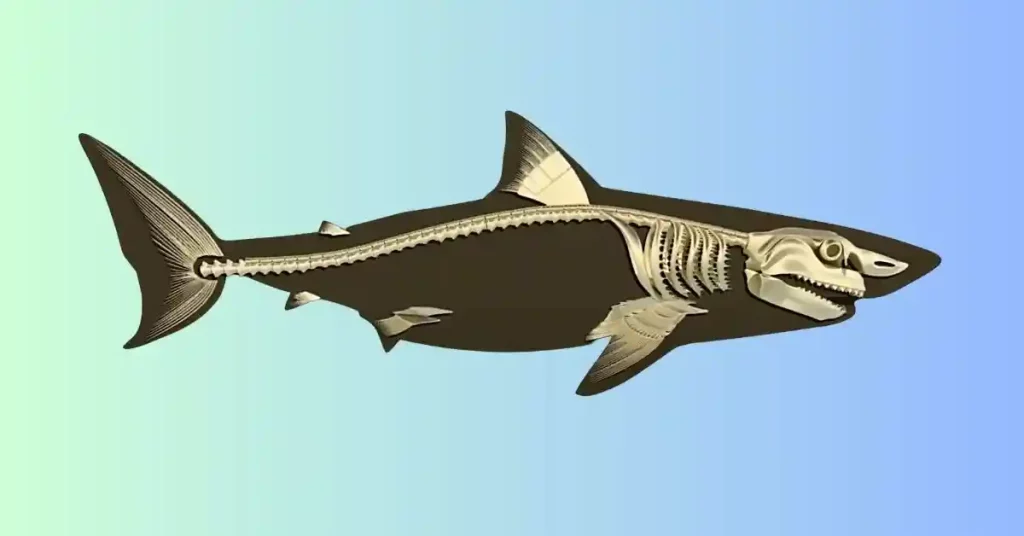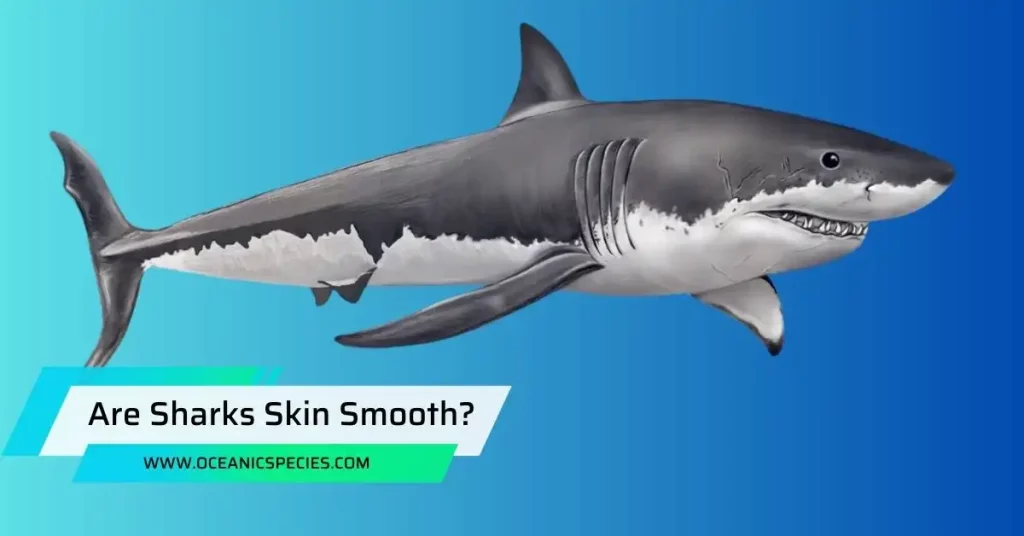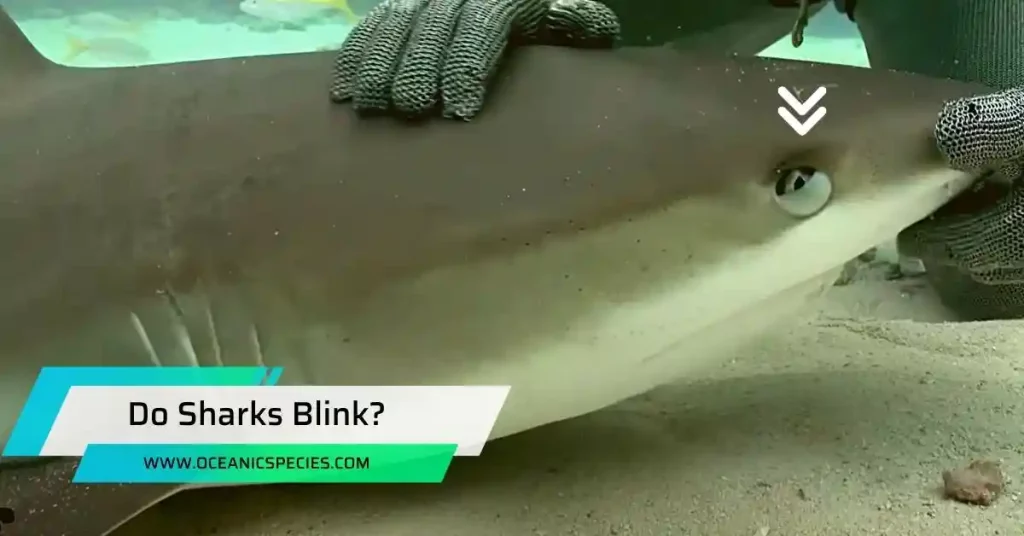Sharks are not invertebrates. They are a type of fish that have a cartilaginous skeleton.
Sharks are a group of fish that belong to the class Chondrichthyes. Unlike invertebrates, which lack a backbone, sharks have a cartilaginous skeleton, meaning their bones are made of flexible cartilage rather than hard bone. This unique adaptation allows them to be highly agile and maneuverable in the water.
Sharks have been around for millions of years, evolving into a diverse range of species with various adaptations for survival in different marine environments. Known for their sharp teeth and formidable hunting abilities, sharks play a vital role in ocean ecosystems as top predators. Despite their fearsome reputation, most shark species are not a threat to humans and are important to maintaining the balance of marine life.
Let’s go deeper.
Which Characteristics Make Shark Vertebrates?
With sleek bodies, powerful jaws, and a reputation as apex predators, Sharks are undeniably impressive. Let’s delve deeper into the characteristics that distinguish them as such.

Backbone:
One of the primary characteristics that sets sharks apart as vertebrates is the presence of a backbone or spinal column. This bony structure runs along the length of the shark’s body, providing support and protection for its vital organs. The backbone is made up of a series of individual vertebrae that are connected by flexible ligaments, allowing the shark to swim with agility and grace.
Endoskeleton:
Sharks, like other vertebrates, possess an internal skeleton known as an endoskeleton. This framework provides a solid structure for the body and enables movement. The endoskeleton not only supports the shark’s muscles but also protects its internal organs, including the heart, liver, and stomach. It acts as a sturdy framework for the shark’s entire body, ensuring its overall stability.
Cartilage:
Unlike most vertebrates, which have skeletons made primarily of bone, sharks have a unique skeletal structure composed mainly of cartilage. Cartilage is a tough yet flexible tissue that provides the shark with both strength and flexibility. This adaptation allows the shark to maneuver easily through the water and make sudden, swift movements when hunting prey. The cartilaginous skeleton also reduces the shark’s overall weight, making it more buoyant and efficient in the marine environment.
Jaw and teeth:
Sharks possess a highly specialized jaw structure that is characteristic of vertebrates. Their jaws are separate from the rest of their skulls and are designed to project forward when feeding. This unique jaw structure allows sharks to exert a tremendous bite force, enabling them to capture and consume prey effectively. Additionally, sharks have multiple rows of razor-sharp teeth, which they continually shed and replace throughout their lives.
What Role Does The Backbone Play In Sharks?
In this section, we will explore the role of the backbone in sharks and shed light on this intriguing topic.
The Backbone: A Key Feature In Sharks
The backbone, also known as the vertebral column, plays a crucial role in the overall structure and function of sharks. Here are the key points to consider:
- Sharks are believed to have evolved from primitive ancestors that lived more than 400 million years ago.
- The cartilaginous skeleton of sharks is thought to be an ancestral trait that has been conserved through evolution.
- Through diverse adaptations, sharks have become apex predators in their respective ecosystems, exhibiting various body shapes, sizes, and hunting strategies.
- The absence of bone in sharks allows for more flexibility in their feeding habits, enabling them to consume larger prey items that would be challenging for fish with bony skeletons.
Frequently Asked Questions
How Do Sharks Breathe?
Sharks breathe through gills, which extract oxygen from water as it flows over them.
Do All Sharks Have Sharp Teeth?
Yes, most sharks have sharp teeth that are specialized for hunting and feeding on their prey.
Can Sharks See In The Dark?
Yes, sharks have excellent night vision due to a layer of cells called the tapetum lucidum in their eyes.
What Is The Largest Shark Species?
The largest shark species is the whale shark, which can grow up to 40 feet in length.
Conclusion
While sharks may share some characteristics with invertebrates, such as their predatory nature and streamlined bodies, they possess a highly evolved skeletal structure made of cartilage rather than bone.
This adaptation enables them to be incredibly agile and efficient swimmers. With their complex sensory systems, sharks are top predators in their marine ecosystems, playing a crucial role in maintaining the balance of ocean life. Recognizing that sharks are not invertebrates provides us with a better understanding of their unique biology and their importance in marine ecosystems.
- Teeth are vital for a shark’s survival as they enable them to capture and consume their prey efficiently.
- A sharp set of teeth allows sharks to tear flesh, crush hard shells, or even slice through the thick skin of marine animals.
- Without their teeth, sharks would struggle to secure their food and may face difficulties surviving in their natural habitats.
Shark Evolution And Adaptation
The evolution of cartilaginous skeletons in sharks dates back hundreds of millions of years. Over time, these remarkable predators have developed specialized anatomical features that have contributed to their success. Here are some remarkable facts about shark evolution and adaptation:
- Sharks are believed to have evolved from primitive ancestors that lived more than 400 million years ago.
- The cartilaginous skeleton of sharks is thought to be an ancestral trait that has been conserved through evolution.
- Through diverse adaptations, sharks have become apex predators in their respective ecosystems, exhibiting various body shapes, sizes, and hunting strategies.
- The absence of bone in sharks allows for more flexibility in their feeding habits, enabling them to consume larger prey items that would be challenging for fish with bony skeletons.
Frequently Asked Questions
How Do Sharks Breathe?
Sharks breathe through gills, which extract oxygen from water as it flows over them.
Do All Sharks Have Sharp Teeth?
Yes, most sharks have sharp teeth that are specialized for hunting and feeding on their prey.
Can Sharks See In The Dark?
Yes, sharks have excellent night vision due to a layer of cells called the tapetum lucidum in their eyes.
What Is The Largest Shark Species?
The largest shark species is the whale shark, which can grow up to 40 feet in length.
Conclusion
While sharks may share some characteristics with invertebrates, such as their predatory nature and streamlined bodies, they possess a highly evolved skeletal structure made of cartilage rather than bone.
This adaptation enables them to be incredibly agile and efficient swimmers. With their complex sensory systems, sharks are top predators in their marine ecosystems, playing a crucial role in maintaining the balance of ocean life. Recognizing that sharks are not invertebrates provides us with a better understanding of their unique biology and their importance in marine ecosystems.
- Backbone function: The backbone provides essential support for the shark’s body and serves as a central axis that connects different parts of the shark’s anatomy.
- Flexibility: The backbone allows sharks to move with agility and grace in their marine environment. It provides flexibility that enables them to make sharp turns and sudden movements while swimming.
- Protection for vital organs: The vertebral column acts as a protective barrier for the shark’s spinal cord, which is an integral part of the nervous system. It helps safeguard the delicate nerves that control the shark’s movements and sensory functions.
- Attachment points: The backbone serves as attachment points for various muscles and ligaments, enabling the shark to exert force during swimming and hunting activities.
- Calcium deposits: The backbone of a shark is composed of cartilage rather than bone. Cartilage contains calcium deposits that maintain the strength and structure of the backbone, ensuring its durability.
- Evolutionary adaptation: The backbone is an evolutionary adaptation that distinguishes sharks as vertebrates, setting them apart from invertebrate organisms that lack a backbone.
What Do Sharks Have Instead Of Bones?
Sharks have unique skeletal structures. Unlike most other fish, sharks do not have bones. Instead, they possess a completely different type of skeletal system that helps them thrive in their marine environment. Let’s explore what sharks have instead of bones.
Cartilage: The Flexible Framework
One of the key features that sets sharks apart from other fish is their skeleton, which is made entirely of cartilage. This flexible and lightweight tissue provides numerous advantages to sharks, helping them navigate their underwater world with ease. Here are some key points about cartilage in sharks:
- Cartilage is a tough yet pliable substance that serves as a supportive framework for the shark’s body.
- Due to its flexible nature, cartilage allows sharks to move quickly and with agility, making them efficient predators.
- This unique skeletal structure also helps reduce the overall weight of the shark’s body, allowing for buoyancy and easier maneuverability.
- Cartilage is more resistant to damage than bone, enabling sharks to withstand the immense pressure of the ocean depths.
The Benefits Of Sharks Having A Cartilaginous Skeleton Instead Of A Bony One
One of the most distinctive features of sharks is their cartilaginous skeleton. Unlike most other animals, sharks do not have bones made of calcium. Instead, their skeleton is made up of flexible and lightweight cartilage.
While this may seem like a disadvantage compared to having a bony skeleton, sharks actually benefit in several ways from this unique adaptation.
Flexibility:
The cartilaginous skeleton of sharks provides them with exceptional flexibility. This allows them to maneuver through the water with ease, making them powerful and agile predators. Unlike animals with bony skeletons, sharks are not limited by rigid joints and have a greater range of motion. This flexibility enables them to swim gracefully and quickly, making them formidable hunters.
Energy efficiency:
Another advantage of having a cartilaginous skeleton is that it is lighter than a bony skeleton. This lightness reduces the energy required for sharks to swim and helps them conserve energy. By having a lighter skeleton, sharks can move more efficiently through the water, allowing them to cover long distances and seek out food sources effectively. This energy efficiency is crucial for the survival of sharks, especially during long migrations or when searching for prey in vast oceanic territories.
Buoyancy:
The cartilaginous skeleton of sharks also contributes to their buoyancy control. Sharks have a large liver that is filled with oil, which is less dense than water. When combined with their lightweight skeleton, this oil-filled liver allows sharks to control their buoyancy and stay afloat in the water column. By adjusting their buoyancy, sharks can rise to the surface or descend to different depths effortlessly. This adaptability is essential for their survival in various oceanic environments.
Speed and stealth:
Sharks’ cartilaginous skeleton provides them with an advantage in terms of speed and stealth. The flexibility of their skeleton allows them to generate powerful and efficient swimming motions. Additionally, the absence of heavy bones reduces drag as they move through the water, enabling sharks to reach impressive speeds. This speed, combined with their streamlined body shape, allows them to ambush their prey with lightning-fast strikes, often catching them off guard.
Protective cushioning:
While a bony skeleton provides rigid protection, a cartilaginous skeleton gives sharks a unique type of cushioning. Cartilage is more resistant to impact and is flexible enough to absorb and distribute forces. This provides sharks with a natural shock absorber, protecting vital organs and reducing the risk of injury during collisions or encounters with potential predators.
Why Do Sharks Not Have Bones?
Sharks do not have bones because their skeletons are made of cartilage. This flexible material provides them with agility and allows for quick movements in the water. Let’s dive deeper and explore the key reasons behind this unique adaptation.
Cartilage provides advantages:
The absence of bones in a shark’s body offers several benefits. Cartilage is lighter and more flexible than bones, allowing sharks to move with agility and navigate through the water effortlessly. This evolutionary adaptation enables them to swim faster and more efficiently, making them highly efficient hunters in their marine environments.
Enhanced buoyancy:
Another advantage of having a cartilaginous skeleton is increased buoyancy. Sharks are known to be negatively buoyant, meaning they would sink to the ocean floor if they didn’t possess a mechanism to counteract it. The lightweight nature of cartilage helps to offset the shark’s weight, allowing it to remain suspended in the water column and maintain buoyancy.
Greater flexibility:
Unlike the rigid structure of bones, a cartilaginous skeleton provides sharks with incredible flexibility. This flexibility allows them to twist and turn their bodies quickly, making sharp maneuvers to capture prey or avoid obstacles. The cartilage acts as a shock absorber as well, reducing the impact of sudden movements on the shark’s body.
Lifespan and regeneration:
Sharks continuously grow throughout their lives, and their cartilaginous skeletons are capable of adapting to their growing bodies. Unlike bones that stop growing once an organism reaches maturity, cartilage allows sharks to keep growing and adapting as they age. Additionally, cartilage has the ability to regenerate, aiding in the healing process if a shark sustains an injury.
Predator defense:
Sharks’ cartilaginous skeletons offer them an advantage when it comes to battling predators or defending themselves. The flexible nature of cartilage makes it more resistant to cracks or fractures, reducing the risk of serious injuries during aggressive encounters. This adaptability allows sharks to survive in harsh aquatic environments and maintain their position on the top of the food chain.
If Sharks Have No Bones What Are Their Teeth?
Sharks have no bones; their teeth are made of strong, durable cartilage. The teeth of a shark are composed of cartilage, as sharks do not have bones. Let’s explore this intriguing topic to uncover the secrets behind these remarkable toothy predators.
The Anatomy Of Shark Teeth

- Sharks may not have bones, but their teeth are incredibly strong and durable.
- Their teeth are primarily composed of dentin, a hard calcified tissue found in the skeleton of most vertebrates.
- The dentin in shark teeth is reinforced with a layer of enamel, the hardest substance in the animal kingdom.
- Unlike human teeth, which are attached to the jawbone, shark teeth are not fixed in place. They are constantly growing and replacing themselves throughout the shark’s life.
Tooth Shape And Function
- Shark teeth come in various shapes and sizes, depending on the species and their dietary preferences.
- Some sharks have broad, triangular teeth designed for cutting and ripping through flesh.
- Others have needle-like teeth used for grasping and holding onto slippery prey.
- Sharks can have several rows of teeth, with new teeth moving forward to replace old ones that may be damaged or lost during hunting.
The Remarkable Regeneration Process
- One of the most extraordinary features of shark teeth is their ability to regenerate quickly.
- When a tooth is lost or broken, a new tooth from the next row will move forward to replace it.
- This continuous replacement process ensures that sharks always have a fresh set of teeth ready for their relentless feeding habits.
The Importance Of Teeth For Survival
- Teeth are vital for a shark’s survival as they enable them to capture and consume their prey efficiently.
- A sharp set of teeth allows sharks to tear flesh, crush hard shells, or even slice through the thick skin of marine animals.
- Without their teeth, sharks would struggle to secure their food and may face difficulties surviving in their natural habitats.
Shark Evolution And Adaptation
The evolution of cartilaginous skeletons in sharks dates back hundreds of millions of years. Over time, these remarkable predators have developed specialized anatomical features that have contributed to their success. Here are some remarkable facts about shark evolution and adaptation:
- Sharks are believed to have evolved from primitive ancestors that lived more than 400 million years ago.
- The cartilaginous skeleton of sharks is thought to be an ancestral trait that has been conserved through evolution.
- Through diverse adaptations, sharks have become apex predators in their respective ecosystems, exhibiting various body shapes, sizes, and hunting strategies.
- The absence of bone in sharks allows for more flexibility in their feeding habits, enabling them to consume larger prey items that would be challenging for fish with bony skeletons.
Frequently Asked Questions
How Do Sharks Breathe?
Sharks breathe through gills, which extract oxygen from water as it flows over them.
Do All Sharks Have Sharp Teeth?
Yes, most sharks have sharp teeth that are specialized for hunting and feeding on their prey.
Can Sharks See In The Dark?
Yes, sharks have excellent night vision due to a layer of cells called the tapetum lucidum in their eyes.
What Is The Largest Shark Species?
The largest shark species is the whale shark, which can grow up to 40 feet in length.
Conclusion
While sharks may share some characteristics with invertebrates, such as their predatory nature and streamlined bodies, they possess a highly evolved skeletal structure made of cartilage rather than bone.
This adaptation enables them to be incredibly agile and efficient swimmers. With their complex sensory systems, sharks are top predators in their marine ecosystems, playing a crucial role in maintaining the balance of ocean life. Recognizing that sharks are not invertebrates provides us with a better understanding of their unique biology and their importance in marine ecosystems.





